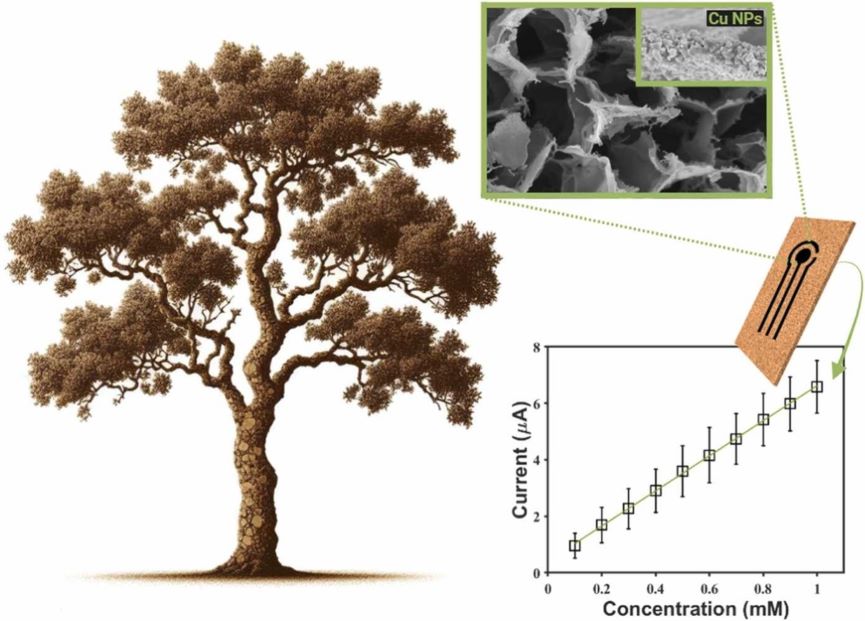Laser Induced Graphene (LIG) is a highly versatile material with exceptional electrical conductivity and large surface area obtained through the laser pyrolysis of aromatic plastics like polyimides. The recent remarkable discovery that LIG can also be synthesized from environmentally friendly materials like cork, extends application to the manufacture of sustainable, biocompatible, and eco-friendly devices such as biosensors. Here we present the fabrication of a novel “green” non-enzymatic glucose sensor obtained by direct laser writing of flexible cork sheets. To enable glucose detection, the cork sheets were wetted with an aqueous CuSO4 solution. Laser graphitization promoted the conversion of CuSO4 into CuOnanoparticles and resulted in formation of copper-cork Laser Induced Graphene (Cu-cLIG) materials displaying high surface area and high density of CuO NPs embedded in the cLIG matrix. The sensor showed excellent glucose sensing performance in buffer and good selectivity over interfering molecules. A fully laser written sensor was also fabricated and tested for detection of glucose in artificial urine. The sensor exhibited high stability and reproducibility, allowing glucose detection in artificial urine with a high sensitivity of and a LOD of . This easy and eco-friendly fabrication method, combined with the use of renewable and abundant precursor materials, paves the way for the development of truly sustainable sensing platforms for future green electronics.

Research Activity on Carbon Nanomaterials at the University of Parma
